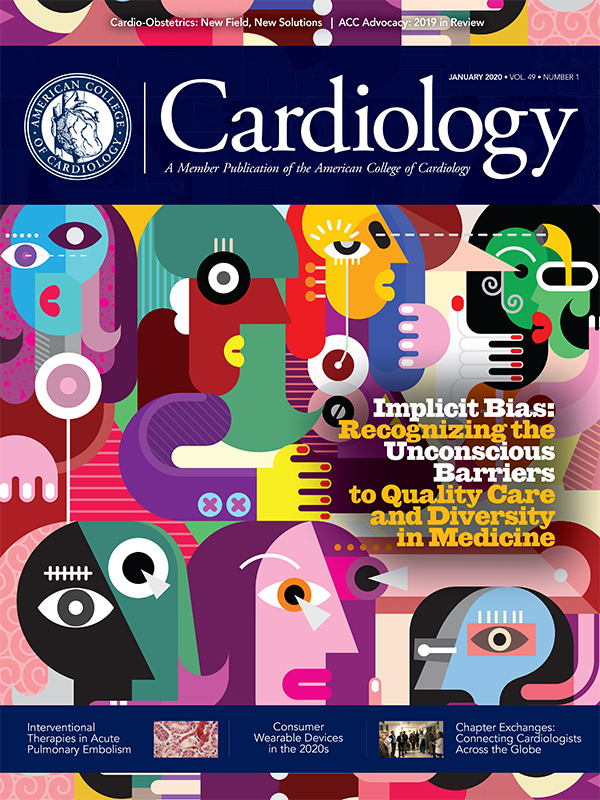Editor's Corner | Digging for Bones in the ISCHEMIA Trial

Finally – ISCHEMIA! It took ten years and lots of work and money. Here it is: In patients with stable angina and moderate to severe ischemia on stress testing, an invasive strategy coupled with optimal medical therapy (OMT) produces no benefit over OMT alone at the (roughly) three-year follow-up.
There was no difference in the hard endpoints of death and myocardial infarction (MI), and no difference in the expanded primary endpoint of cardiovascular death, MI, hospitalization for unstable angina, hospitalization for heart failure, or resuscitation for cardiac arrest.
Important to note is that ISCHEMIA did not include patients with acute coronary syndromes (ACS) within previous two months, class IV angina, ejection fraction <35 percent or left main disease. Here's a recap of the study protocol. Patients were to receive a CT angiogram when feasible (done in roughly three-quarter of participants) to rule out left main disease and to exclude those without severe atherosclerotic disease.
As an aside, this protocol gives us a peek into what the future holds for screening patients with coronary disease (see below). Patients were then randomized.
The invasive group had coronary angiography and stenting or coronary bypass surgery if appropriate with the goal of complete revascularization. All patients had OMT.
The result?
At a median of 3.3 years, the rates of the primary endpoint were 13.3 percent in the invasive group and 15.5 percent in the conservative group (adjusted hazard ratio [HR], 0.93; 95 percent confidence interval 0.80-1.08).
The conservative group had fewer events occurring in the first two years, but the curves crossed at that point and the invasive strategy group seemed to do better thereafter. The absolute difference between groups during both periods was similar, leading to equivalent results at the final follow-up.
So, let's begin to dig for bones.
First: Are we surprised? Remember the COURAGE trial? COURAGE, now about 13 years old, also compared OMT alone or in combination with PCI as an initial management strategy in patients with stable coronary artery disease.1
In COURAGE, the estimated 4.6-year rate of the primary outcome of death from any cause and nonfatal MI was 19.0 percent in the PCI group and 18.5 percent in the OMT group. No difference.
The authors concluded that as an initial management approach, optimal medical therapy without routine PCI can be implemented safely in the majority of patients with stable coronary artery disease.

Sound familiar?
Twelve years later, in ISCHEMIA there was still no difference between the two therapeutic groups. But, the numbers were "better" for the death/MI outcomes: 13.9 percent in the conservative group vs. 11.7 percent in the invasive group after four years.
It's not fair to compare trials, but there is a possible bone in those numbers – better OMT and better stents in recent years are likely responsible for the improvement. Also, in COURAGE about one-third of patients underwent revascularization for angina or for development of an ACS.
In ISCHEMIA "events" that resulted in catheterization/revascularization in the conservative group occurred in only about 14 percent of patients – also possibly due to the better OMT bone.
Finally, in COURAGE the addition of PCI to OMT reduced the prevalence of angina. Patients "got better."
But PCI did not reduce long-term rates of death, nonfatal MI and hospitalization for ACS. Remember, there was a COURAGE substudy2 that showed that myocardial ischemia was reduced in patients who had an invasive strategy – but that reduction arguably did not translate to other outcomes.
Second: Despite the brouhaha that ISCHEMIA was a "negative" trial, the patients in the invasive group of this trial ended up with an advantage over the conservative group. The invasive group had far greater relief of angina and better quality of life metrics.
In ISCHEMIA, at one year, half of the invasively treated patients were angina-free compared with 20 percent in the OMT group. Is this attributable to a placebo effect? Possibly, though the length of follow-up makes that less likely.
Does it come as a surprise that revascularization, by reducing ischemia, reduces angina? Of course not. But this provides us a real bone to chew on. What does a patient want and how does ISCHEMIA help us with an individual's treatment strategy?
"Transparency" is now a buzzword and it applies here. Patients might indeed choose to follow OMT alone knowing their life (at least for about two years) might not be endangered, but also knowing their angina will still be with them in exchange for not having a heart cath.
Alternatively they should know that revascularization will likely diminish or abolish angina in exchange for about a 2 percent greater early risk (which disappears at two years). But this comes with undergoing a cath.
Third: A reminder. I hope all of us support "Primum non nocere." We should not harm patients with therapies. But there was harm in ISCHEMIA! In the first two years, curves for the primary outcome favor conservative therapy.
The reason?
The invasive strategy group had an "early" risk of about 5 percent for risk of stroke, death or MI compared with about 3 percent for the OMT group. The approximately 2 percent difference is due to the rate of procedure-related complications. The lines come together as events in the conservative therapy group "catch up" at year two.
Nonetheless, things do not always go well in the cath lab. Therein lies another bone and a caveat. If complication rates in your cath lab are lower than those in ISCHEMIA, the differences in outcomes between invasive and conservative therapy would favor invasive therapy. However, if your cath lab has higher complication rates, conservative therapy gains an advantage and the results of ISCHEMIA might not apply!
Fourth: CT angiography is arguably the big winner in ISCHEMIA. It's use to rule in or rule out coronary atherosclerosis as well as to identify left main disease is established. Some patients will not tolerate the contrast load, but we are now entering an era of noninvasive CT angiography and the emerging use of CT-fractional flow reserve (FFR) to screen for/evaluate the hemodynamic importance of coronary lesions.
This may not bode well for diagnostic coronary caths. But for patients, noninvasive testing always trumps invasive technology. See the future. It is now.
Fifth: We need to learn what other bones are to be found within ISCHEMIA. Are there groups of patients that did better than others? Did "complete" revascularization make a difference? How did those with greater abnormalities on ischemic imaging fare compared with those who had less?
How about cholesterol and blood pressure control? Did these portions of OMT have as much effect as we surmise?
And of course – what about the longer term results. Looking at the curves, it appears invasive therapy may begin to do "better" at three to four years. Will those curves digress further over time? This is especially true of the "new MI" curves which seem already to favor invasive therapy.
Finally, ISCHEMIA challenges us. COURAGE and now the ISCHEMIA trial imply that reducing myocardial ischemia may make you feel better but does not affect other outcomes. Is myocardial ischemia really not "bad" for you? That does not make sense.
In fact, the trials tell us the opposite.
ISCHEMIA shows us that roughly 15 percent of patients enrolled – whether treated invasively or conservatively – had outcome events. Who are those patients who ended up "under" the outcome curves?
Our challenge is not only to figure out whether one therapy is better than another, but also to identify those patients at the outset who will fail. Then we'll have to figure out newer, more effective treatments for them and see if the curves improve and move "south."
References
- Boden WE, O'Rourke RA, Teo KK, et al. Optimal medical therapy with or without PCI for stable coronary disease. N Engl J Med 2007;356:1503-16.
- Shaw LJ, Weintraub WS, Maron DJ, et al. Baseline stress myocardial perfusion imaging results and outcomes in patients with stable ischemic heart disease randomized to optimal medical therapy with or without percutaneous coronary intervention. Am Heart J 2012:164;243-50.
Clinical Topics: Acute Coronary Syndromes, Arrhythmias and Clinical EP, Cardiac Surgery, Dyslipidemia, Heart Failure and Cardiomyopathies, Invasive Cardiovascular Angiography and Intervention, Noninvasive Imaging, Stable Ischemic Heart Disease, Atherosclerotic Disease (CAD/PAD), Implantable Devices, SCD/Ventricular Arrhythmias, Aortic Surgery, Cardiac Surgery and Arrhythmias, Cardiac Surgery and Heart Failure, Cardiac Surgery and SIHD, Lipid Metabolism, Nonstatins, Acute Heart Failure, Interventions and ACS, Interventions and Coronary Artery Disease, Interventions and Imaging, Angiography, Computed Tomography, Nuclear Imaging, Chronic Angina
Keywords: ACC Publications, Cardiology Magazine, Angina, Stable, Acute Coronary Syndrome, Angina, Stable, Angina, Unstable, Benchmarking, Blood Pressure, Catheterization, Cholesterol, Coronary Angiography, Coronary Artery Bypass, Coronary Artery Disease, Follow-Up Studies, Fractional Flow Reserve, Myocardial, Fractional Flow Reserve, Myocardial, Heart Arrest, Heart Failure, Hemodynamics, Hospitalization, Myocardial Infarction, Myocardial Ischemia, Percutaneous Coronary Intervention, Placebo Effect, Prevalence, Quality of Life, Stents, Stroke, Stroke Volume, Tomography, X-Ray Computed, Treatment Outcome
< Back to Listings


